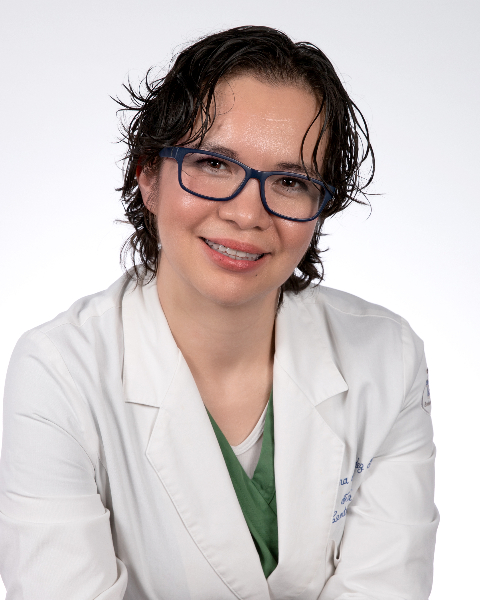PQA 06 - PQA 06 Biology and Patient Reported Outcomes/QoL/Survivorship Poster Q&A
2807 - Assessing the Impact of Medical Physicists Education Consult in Radiotherapy Patients Care: A Pilot Study in Mexico
Monday, September 30, 2024
5:00 PM - 6:00 PM ET
Location: Hall C
Screen: 1

Mariana Hernandez-Bojorquez, PhD, MS
American British Cowdray Medical Center
Mexico City, Mexico City
Presenter(s)
M. Hernandez-Bojorquez1, M. D. De La Mata Moya2, A. N. Tellez Najera3, and I. O. Ayala Iturbe3; 1Centro Médico ABC, Mexico City, DF, Mexico, 2Centro Médico ABC, Mexico City, Mexico, 3instituto Politecnico Nacional, Mexico City, DF, Mexico
Purpose/Objective(s): To implement the methodology proposed by Atwood et al. at one institution in Mexico and, to investigate the impact of medical physicist-patient education consults on patient anxiety and patient satisfaction. Materials/
Methods: A randomized prospective clinical study phase III study, single blind, at our institution in Mexico City, Mexico. Forty-six patients were randomly assigned to the Medical Physics Education Consult Program (MPECP) arm or to the control arm of the study. MPECP arm received two physicist-patient consults to educate them on the technical aspects of their radiotherapy procedure (first consult prior simulation and CT scan acquisition and, second consult prior to the first treatment session), while patients assigned to the control arm received the standard of care in our hospital. The questionnaires were translated to Spanish and given to patients through google forms platform. They were answered after enrollment, after the simulation, after the first treatment session, and after the last treatment session to assess anxiety (first six questions), technical satisfaction (questions 7-9), and overall satisfaction (question 10).
Results: The decrease in anxiety patient’s auto perception was observed in the questionnaires with one-point increment between simulation and the following consults. An increase between one and two points in average in technical satisfaction for the MPECP arm, showed a tendency of positive impact from the physicist intervention even though it was not statistically significant in every intervention point; and d no changes were observed in control arm. The increase in technical satisfaction for the MPECP arm, was statistically significant at the simulation time point (p=0.03). We also observed that patients in the MPECP arm, showed more understanding and less discomfort when machine failures were presented during the treatment course, however this will have to be carefully included in the modified version of the study.
Conclusion: Medical physicists’ patient-facing role with education approach, may influence to decrease anxiety and stress auto perception in patients’ radiotherapy course, mainly at the beginning of the radiotherapy process (simulation time point). We know this helps to gain accuracy in treatment setting up. Physicist approach to patients through this educational tool may improve treatment delivery and patient experience. Future work to increase the patients enrolled and further analysis is needed to obtain stronger conclusions and to better understand the impact of MPECP. Work has to be done to present this program available to all patients, therefore, they can benefit from this physicist’s input in radiation patient care.
Purpose/Objective(s): To implement the methodology proposed by Atwood et al. at one institution in Mexico and, to investigate the impact of medical physicist-patient education consults on patient anxiety and patient satisfaction. Materials/
Methods: A randomized prospective clinical study phase III study, single blind, at our institution in Mexico City, Mexico. Forty-six patients were randomly assigned to the Medical Physics Education Consult Program (MPECP) arm or to the control arm of the study. MPECP arm received two physicist-patient consults to educate them on the technical aspects of their radiotherapy procedure (first consult prior simulation and CT scan acquisition and, second consult prior to the first treatment session), while patients assigned to the control arm received the standard of care in our hospital. The questionnaires were translated to Spanish and given to patients through google forms platform. They were answered after enrollment, after the simulation, after the first treatment session, and after the last treatment session to assess anxiety (first six questions), technical satisfaction (questions 7-9), and overall satisfaction (question 10).
Results: The decrease in anxiety patient’s auto perception was observed in the questionnaires with one-point increment between simulation and the following consults. An increase between one and two points in average in technical satisfaction for the MPECP arm, showed a tendency of positive impact from the physicist intervention even though it was not statistically significant in every intervention point; and d no changes were observed in control arm. The increase in technical satisfaction for the MPECP arm, was statistically significant at the simulation time point (p=0.03). We also observed that patients in the MPECP arm, showed more understanding and less discomfort when machine failures were presented during the treatment course, however this will have to be carefully included in the modified version of the study.
Conclusion: Medical physicists’ patient-facing role with education approach, may influence to decrease anxiety and stress auto perception in patients’ radiotherapy course, mainly at the beginning of the radiotherapy process (simulation time point). We know this helps to gain accuracy in treatment setting up. Physicist approach to patients through this educational tool may improve treatment delivery and patient experience. Future work to increase the patients enrolled and further analysis is needed to obtain stronger conclusions and to better understand the impact of MPECP. Work has to be done to present this program available to all patients, therefore, they can benefit from this physicist’s input in radiation patient care.
